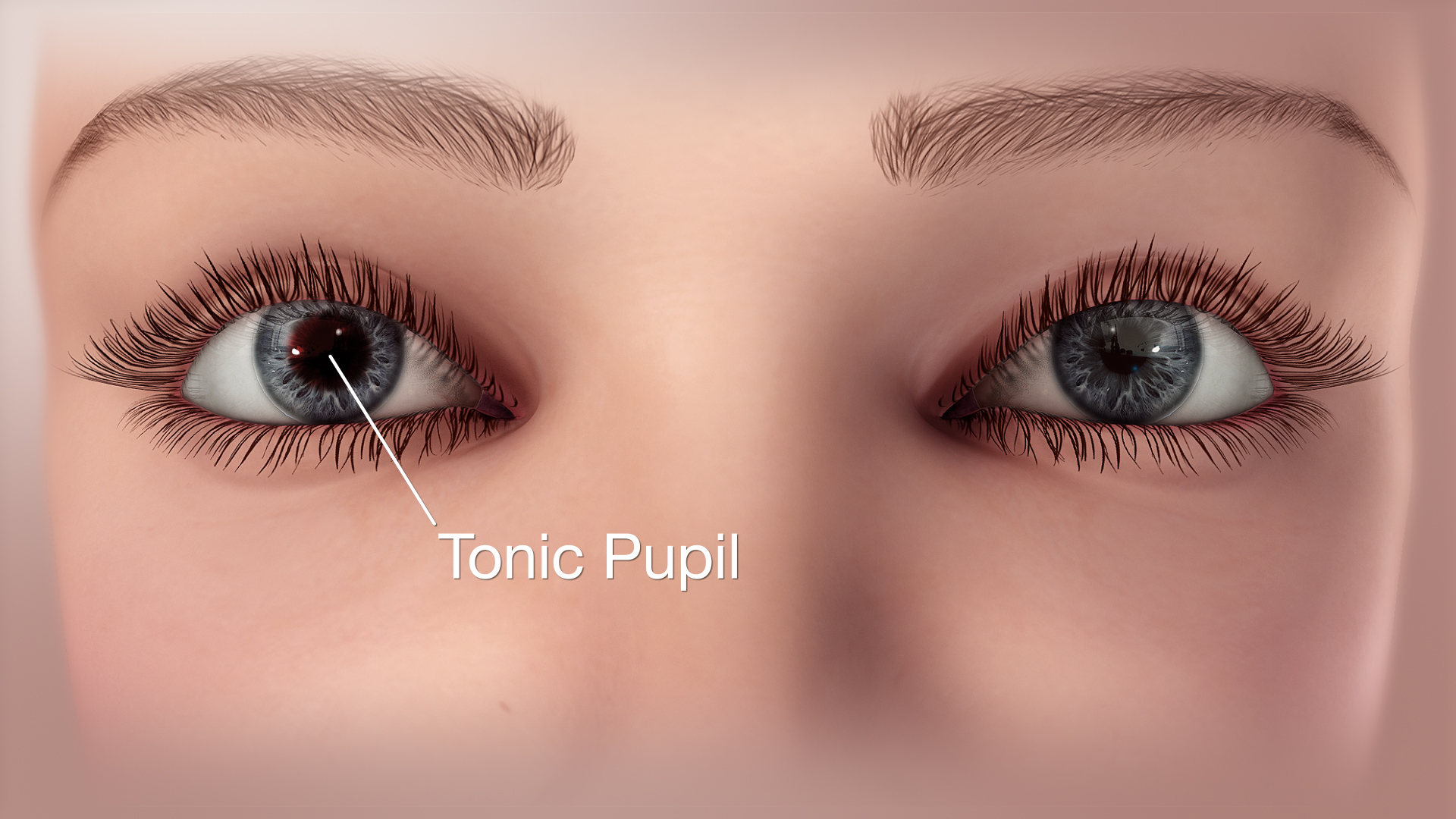A rare neurological issue that affects the autonomic nervous system of the body and the pupil of the eye is known as Tonic Pupil Syndrome or Adie Syndrome or Holmes-Adie Syndrome. In this disorder, the pupil that is affected appears more dilated than the unaffected pupil and is also slower to respond to light. Loss of deep reflexes also occurs in tonic pupil syndrome.
It is a very rare disorder affecting about 5 out of every hundred thousand people. It is more likely to affect more females than males. Young adults in the age group of 25 to 45 years of age are more prone to getting this disorder. Fortunately, tonic pupil syndrome is not a life-threatening disorder.

Symptoms
The most common signs and symptoms of tonic pupil syndrome are:
- One pupil stays dilated
- The affected eye is less responsive
- Blurry vision
- Impairment of depth perception
- Sensitivity towards light
- Reduced or absence of deep tendon reflexes
- Headaches
- Mood swings
- Excessive or reduced sweating
Causes
The exact cause for tonic pupil syndrome is still not known but it is believed that it occurs due to damage or inflammation of the nerves behind the eyes. This damage or inflammation in the nerves may be caused due to:
- Infections
- Autoimmune conditions
- Traumatic injury
- Complications from surgery
- Tumors
In certain rare cases, this disorder may also be inherited from a parent.
Treatment
The treatment for tonic pupil syndrome is mostly symptomatic. Eye drops that contain a medication such as pilocarpine that helps in constricting the dilated pupil may be prescribed. This constriction will help with symptoms such as depth perception and light glare. Getting prescription glasses or getting a change in the prescription to adjust the vision may be required. If medication is not effective in reducing excessive sweating, a procedure known as thoracic sympathectomy will be required as treatment. Symptoms of sluggish or absence of deep tendon reflexes cannot be treated and are permanent.
The symptoms of this syndrome are not debilitating or life-threatening but this disorder disrupts the daily life of a person. However, the symptoms can be managed with the right treatment.
Disclaimer: The information in no way constitutes, or should be construed as medical advice. Nor is the above article an endorsement of any research findings discussed in the article an endorsement for any of the source publications.








